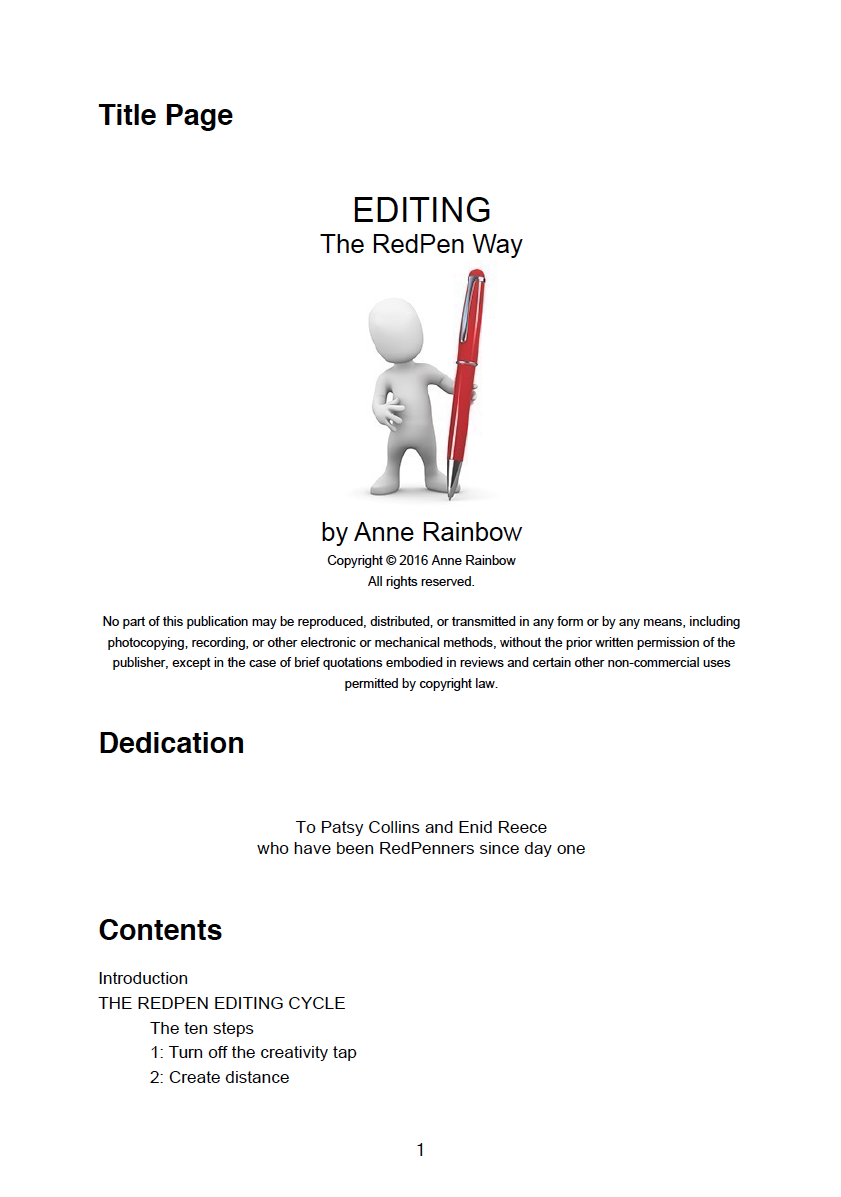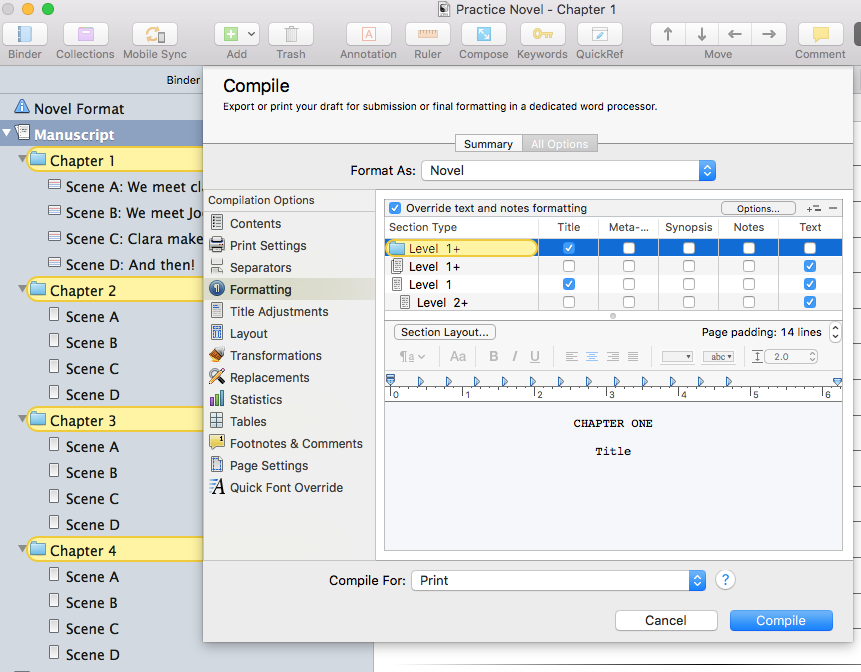
As I mentioned above, unless you have a burning desire for something different, go with the defaults to start with.

You can specify the separators according the type (folder or document) or according to the section types. This additional material is called a separator. This is in addition to whatever you typed in the Binder (your headings) and whatever you typed into the Editing pane (your text). You have the option to include some text, or special characters, or a line space between consecutive documents/folders. Note that these settings apply to all section types – Scrivener applies them globally to your manuscript. In this post, though, we’ll whistle through the other ten. In the next blog post, I will concentrate on the most important topic: Section Layouts tab (the top entry). If you were to choose a different output route, you’d see other topics, those relevant to your choice. Having done that, you are then faced with a plethora of decisions! Let’s consider all the options … Formatting via Compile – the left hand pane entriesĭepending on the output route you chose, the left hand pane presents a list of topics, each of which leads to controls for you to set.įor this blog post, I’ve opted for Print and Scrivener has presented 11 topics for me to consider. Whichever you choose – My Formats / Project Formats – if you change your mind, you can create a duplicate of it and opt for the other: Project Formats / My Formats. The next hurdle was deciding whether I wanted this to be one of My Formats (available for all my projects) or as a Project format (only available for this project) I’d started with Scrivener’s default ‘Manuscript (Times)’ and – once I’d selected the ‘duplicate’ route – entered the name DEMO Manuscript (Times). Whichever route you try to take, you need to accept Scrivener’s directions! Whereas, clicking on the + invites you to ‘Duplicate and Edit Format’. I wanted to start by formatting the Chapter Heading section type that I had assigned to the Chapter Heading section layout …īut as soon as you click on the pencil icon for one of Scrivener default section layouts, you’ll be prompted to create a duplicate – you cannot amend the default project layout!Īnd if you click on the cog wheel, the edit option is greyed out. Ready? Let’s walk through the process … Step-by-step approach to formatting via Compileįor each section type, once you’ve assigned a section layout, you can then accept Scrivener’s default, or set the formatting to suit yourself. This process requires a clear head, not a frazzled one. Each time you make a successful tweak, congratulate yourself.So, don’t save the change until you’ve seen the output and are happy with it.

The setting might not produce the effect you expected. Accept Scrivener’s defaults, create an output, look at it and then, and only then, start tweaking the settings.In this post and the next, I go through all the options (!) but would suggest you adopt this approach. For every entry in the left hand pane – Section Layouts, Separators, Text Layout, etc, etc – tick or untick, or make a selection, or type an entry to specify your requirements. Special effects (bold, underline, italic, capitalising the opening words, …).Font styles and relative sizes of headings and text.Horizontal white space: margin sizes, any indentation, justification, ….Vertical white space: the space above chapter headings (called padding), and the space between paragraphs (called leading).Whatever your output, there are also many other decisions to be made. You need to confirm/specify the page size, the margin settings and you ought to include page numbers. Electronic forms, such as PDF, and paper-based forms are paged.Electronic forms such as ebooks are not ‘paged’ so you don’t need to include page numbers and, since the reader decides on the size and style of the font, you needn’t worry about that either.This will also depend on your output route. Formatting via Compile – decision timeīefore you can start tweaking the settings, you need an idea of how you want the output to look.

That’s achieved by formatting via Compile – for which you need your section types, your section layouts. What’s more important is how your material will be formatted on output. However, this formatting effort simply determines how your text looks in the Editing pane. I explained in this blog post how formatting can be controlled at three levels. Achieved Formatting via Compile – the final frontier


 0 kommentar(er)
0 kommentar(er)
